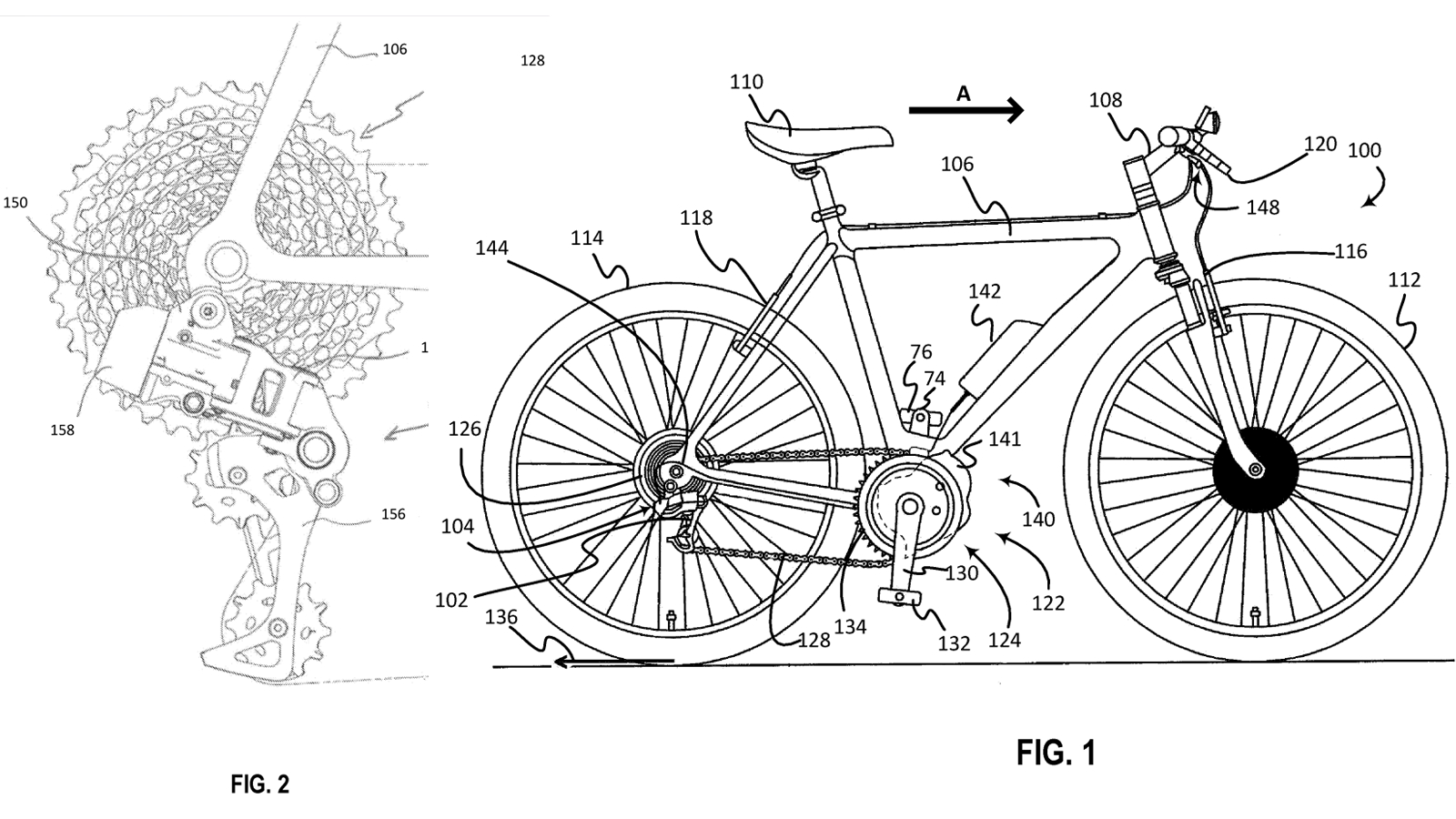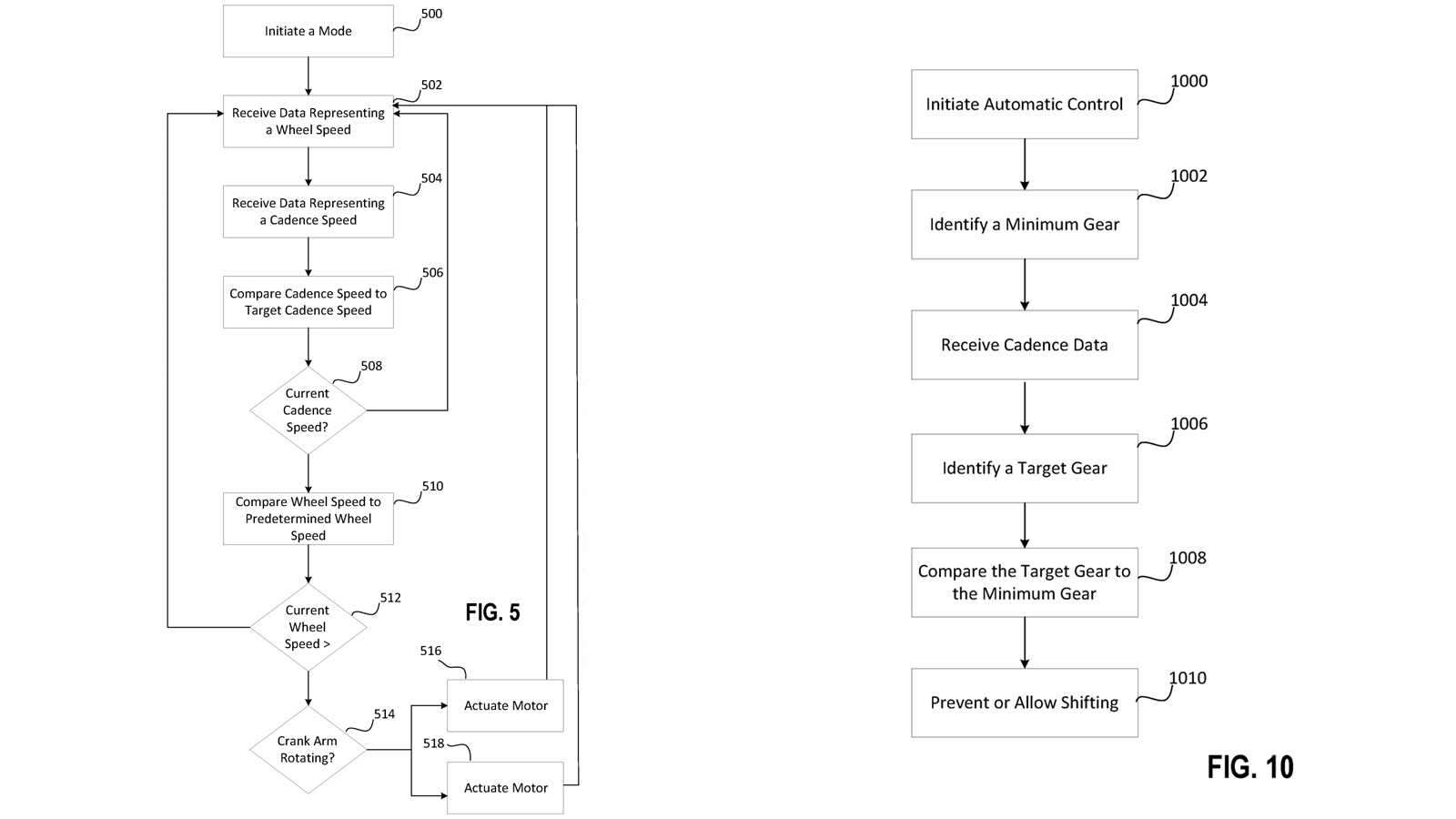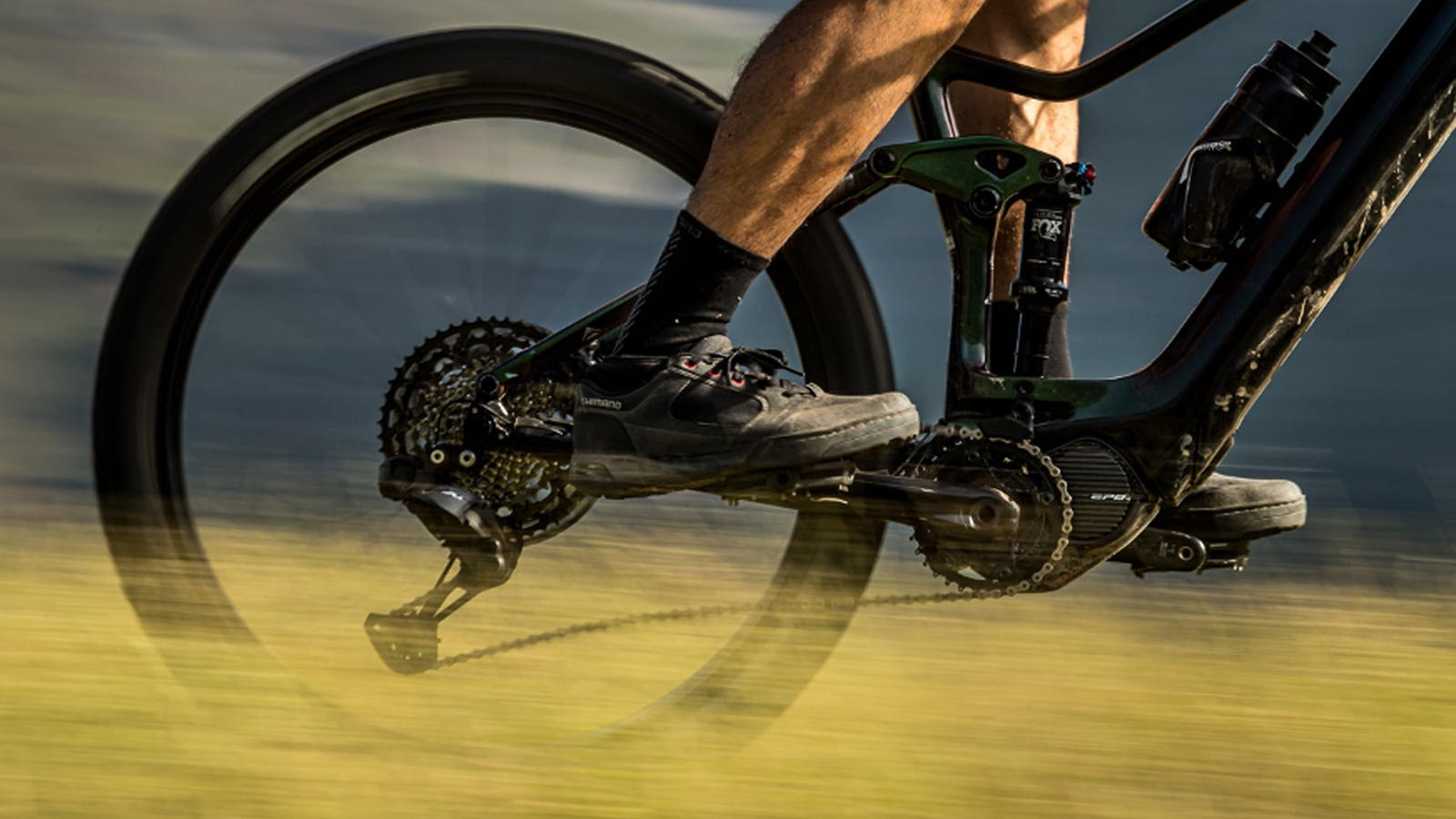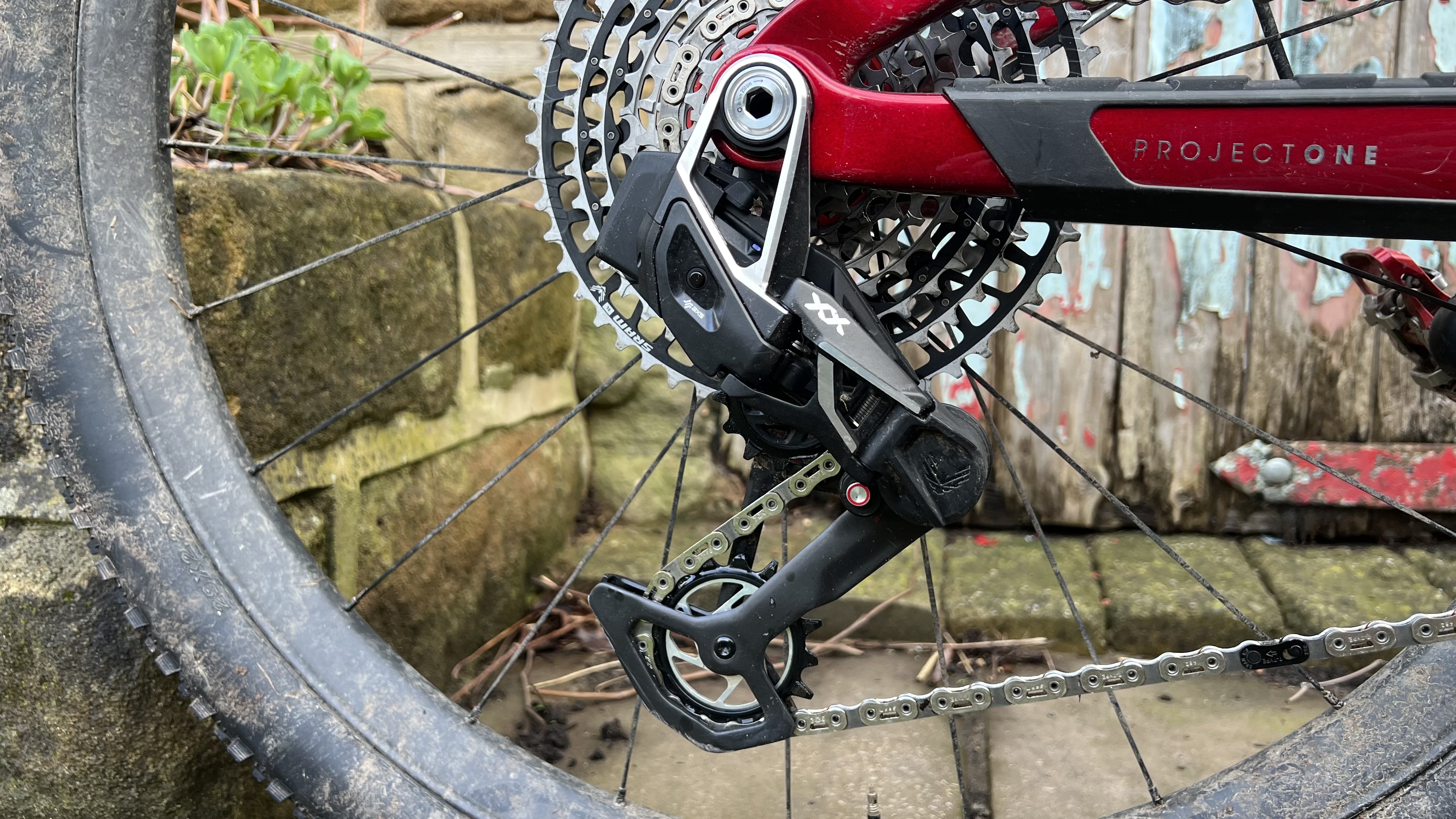
According to a recently published patent, it appears SRAM hasn't just been busy killing the derailleur hanger with their T-Type Eagle transmission, they have also been hard at work developing a new e-MTB drivetrain.
In a patent simply titled "BICYCLE CONTROL SYSTEM" (US20230092352A1), SRAM shows a possible drivetrain concept that would change the way their groupsets would shift gears on the best electric mountain bikes.
SRAM outlines how such a system would work quite clearly in this patent, essentially the drivetrain would gather data from sensors across the bike, process said data using algorithms, and utilize the e-MTB motor's overdrive function to turn the drivetrain and shift gears whilst the cranks remain in a level position.
SRAM also indicates the sensors that would likely be used to harvest such information, these include power meters, cadence sensors, and speed sensors on both wheels. There is also mention of one or more orientation sensors, accelerometers, and gyroscopes which would presumably be used to detect whether the bike was climbing or descending and the dynamics of the riding.

Based on the data, the system would either switch gears or allow riders to manually change gears without pedaling, which not has the benefit of preselecting the right gear for the exit of a corner or sudden incline and maintaining optimum efficiency on long pedaling sections. Being able to preemptively change gears would also alleviate poorly timed and high torque shifting that can excessively wear or break chains.
There's a third benefit as well, as SRAM says it would be able to keep the cranks level in walk mode, making it easier to push an e-MTB up unrideable sections.

SRAM on the backfoot
Although SRAM might have caught the likes of Shimano off-guard with its UDH (universal derailleur hanger) to hangerless checkmate, it's actually SRAM that are playing catch-up here. Shimano already launched a similar system with its new Deore XT Di2 e-MTB drivetrain back in July last year, which features Auto Shift and Free Shift functionality.
Free Shift is a fully manual mode that allows riders to shift gears when coasting, the Auto Shift system removes the need for manual control and is capable of making predictive gear changes based on your speed and cadence while pedaling or coasting.

While an automatically shifting drivetrain will be a big step for SRAM, it also hints at SRAM's intentions to make a concerted effort to expand in the e-MTB market with the introduction of their own motor. We have already spoken about SRAM's potential motor and their investments in e-MTB motor brands and e-MTB specific drivetrain is yet another piece of evidence.
Shimano's Free Shift and Auto Shift features are only compatible with their EP600 and EP801 Drive Units. That means unless SRAM has partnered with a motor brand like Bosch or Yamaha, there is a strong chance that if this drivetrain sees the light of day it will be alongside SRAM's own e-MTB motor.

Will it be T-Type? Will it be AXS? Will it be Flight Attendant compatible?
With few specifics and only a couple of images in the patent, it's hard to speculate on what SRAM tech will also be featured. It's a safe bet that SRAM's AXS wireless communication will be used as SRAM seems to be making a concerted effort to go completely wireless for everything, and the patent specifically mentions wireless communication techniques.
It's also likely that the hangerless T-Type Eagle transmission design will also feature considering it's SRAM's best mountain bike drivetrain. Based on our testing of the XX SL Eagle transmission, shifting is good under high power loads which will suit motor-amplified riding too. As the derailleur itself would simply be taking gear change orders from the shifting processor then we don't see any reason why it won't also work with SRAM's other AXS drivetrains.
If you are aware of how the automatic suspension adjusting Flight Attendant system works, you might have spotted some cross-over when it comes to sensors. Flight Attendant already utilizes sensors that harvest acceleration, tilt (vertical and lateral), and pedaling information which should make complete auto-drivetrain and suspension integration an easy process.
When will we see this tech on our bikes?
Here comes the caveat, as this is a patent there is no guarantee that we will see SRAM bring this tech to market.
That said, considering SRAM already has much of the infrastructure already in place with its AXS wireless communication, power meters and Flight Attendant tech, and there are some clear performance benefits, plus the fact Shimano has a similar product available, we wouldn't be surprised if the contents of this patent become available at some point.







